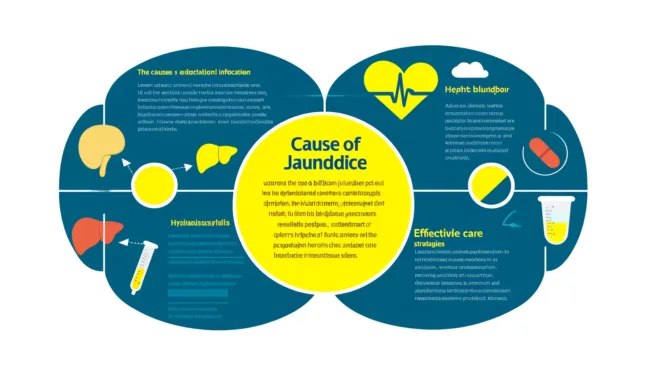Understanding Jaundice : Causes, symptoms, and care guidelines
Jaundice, a common condition characterized by yellowing of the skin and eyes, is a sign of underlying health issues related to the liver, gallbladder, or bile ducts. It occurs due to an accumulation of bilirubin, a yellow pigment, in the blood and body tissues. This comprehensive analysis delves into the causes, symptoms, and management of jaundice, highlighting the critical role of liver function and the impact of hepatitis viruses.
Bilirubin formation and Jaundice development
Bilirubin is primarily produced from the breakdown of hemoglobin in aged red blood cells within the liver. After formation, bilirubin is secreted into bile, stored in the gallbladder, and eventually released into the intestine to aid in digestion. Problems arise when there is excessive bilirubin production, obstruction in bile flow, or liver cell dysfunction, leading to jaundice.

Understanding Jaundice : Causes, symptoms, and care guidelines
Key causes of Jaundice
- Excessive Bilirubin Production: Often triggered by diseases that increase the destruction of red blood cells.
- Biliary Obstruction: Blockages, such as gallstones, can prevent bile from flowing normally, contributing to bilirubin buildup.
- Liver Cell Dysfunction: Viral infections like hepatitis or damage from toxins and alcohol can impair liver function.
Hepatitis and its global impact
Hepatitis, specifically types A, B, C, D, E, F, and G, plays a significant role in liver health worldwide. These viruses can be transmitted through contaminated food, water, blood transfusions, and use of non-sterile medical equipment. Chronic carriers of hepatitis can experience gradual liver damage, leading to severe complications.
Symptoms of Jaundice
Patients with jaundice may exhibit several symptoms, including:
– Yellowing of the skin and whites of the eyes
– Dark urine color, due to excess bilirubin
– General fatigue and gastrointestinal discomfort such as flatulence and constipation
– Tenderness in the liver area
– Increased bilirubin levels in blood tests
Managing Jaundice: Treatment and care
While specific treatments for jaundice depend on the underlying cause, general care guidelines include:
– Strict bed rest to aid recovery
– Regular monitoring by healthcare professionals
– Isolation of personal items to prevent virus transmission
– Nutrition management, incorporating fluids, fruit juices, and easily digestible foods
– Avoidance of irritants like tea, coffee, spices, and fried foods
Preventive measures and Hepatitis vaccination
Prevention plays a crucial role in managing the spread of hepatitis:
– Ensuring safe blood transfusions and using sterile medical instruments
– Widespread immunization programs for hepatitis, often available at low cost, are crucial in preventing the spread of the virus.
The importance of awareness and proactive management
Understanding jaundice and its implications is essential for effective health management. Recognizing the symptoms early and adhering to care guidelines can significantly improve outcomes. With ongoing research and vaccination efforts, there is hope for better management and prevention of the underlying causes of jaundice.
Discover more from Business-News-Today.com
Subscribe to get the latest posts sent to your email.